This summer I took a road trip through one of Europe’s most beautiful mountain ranges: the Dolomites, located in northern Italy.
There are SO many good reasons to visit the Dolomites. In summer, the weather is perfect for an active holiday and there are so many hiking trails from flat easy ones to demanding hikes in the mountains. You can leave your tent at home, hike with a light backpack and stay in one of the many hiking huts, which are both comfortable and serve excellent food. If you are not the hiking type at all, there are also a number of cable cars that can take you into the beautiful mountain scenery anyway
Although the Dolomites are located in Italy, they are part of the Tyrol region shared between Austria and Italy. Therefore, the atmosphere is more Tyrolean than Italian; both German and Italian are spoken in the area. This is why all of the region’s place names are written in both Italian and German.
Map of our route through the Dolomites
If you follow our route, it will take you past some of the Dolomites’ most famous attractions. We took a 6-day tour that included two hikes where we stayed in two of the Dolomites’ many hiking huts. On the remaining nights we slept at different hotels near the sights we wanted to see.
Day 1. The Great Dolomite Road and Lago Carezza
Drive: 3 hours from Bergamo to Nova Levante / Welschnofen, 257 km
Our road trip begins in Bergamo, a small city near Milan that is known for really cheap flights. (Read more about booking cheap flights to the Dolomites here). We soon leave the Milan heat behind us and move into the much more pleasant mountain air. We’re headed towards Bolzano, the westernmost city of the Dolomites, a 2 1/2 hour drive away.
Between the Dolomites’ two main cities – Bolzano in the west and Cortina D’Ampezzo in the east – lies the Great Dolomite Road. Also known as S241, it takes you right through the heart of the Dolomites. Everywhere along the road, the mountain tops protrude above the treetops. In the middle of the Great Dolomites Road we arrive at our accommodation for the night, a small hotel named Hotel Central in the city of Nova Levante / Welschnofen. Our reason for spending the night here is Lago Carezza, an amazingly beautiful lake, which we drive out to in the evening.
Tranquillity at Lago Carezza / Karersee
At sunset the lake is clear like glass and the steep mountains are reflected in the still water. In daylight, the lake has the most incredible turquoise colour. The little lake is just off the main road and is very accessible, but that also means that there are way too many tourists during the day. However, if you visit in the morning or in the evening there are far fewer people and you can experience the silence and the very zen-like atmosphere of Lago Carezza.
Practical info: There are plenty of parking spaces near the lake, but they cost a couple of EUR to use.
 Sunset at Lago Carezza
Sunset at Lago Carezza
 After sunset
After sunset
 Noon at Lago Carezza
Noon at Lago Carezza
Day 2. Hiking around The Three Peaks (Tre Cime Di Lavaredo / Drei zinnen)
Drive: 3 hours via SS241 and SS48 from Nova Levante to Refugio Auronzo, 111km.
On day two we drive the rest of the Great Dolomites Road and arrive in Cortina D’Ampezzo where we eat lunch in the city that is completely enclosed by mountains. Soon we head for Tre Cime Di Lavaredo – Three Peaks that rise up in the middle of the rugged mountain landscape. This hiking route is one of the most beautiful hikes the Dolomites and can easily be done in a single day. But we have planned something else: to spend the night in front of the peaks at the hut Refugio Locatelli / Dreizinnenhütte.
Read more about the trip around Tre Cime Di Lavaredo in my blog post here
Practical info: The hike around the peaks is a loop and starts in the parking lot at Refugio Auronzo. It’s 10 km long and takes approximately 4 hours. The road to the parking lot is a toll road and costs 30 EUR.

Day 3. Hiking around Lago Di Braies / Pragser Wildsee
Drive: 1 hour from Refugio Auronzo to Lago Di Braies, 42 km.
We spend the morning completing our hike around the peaks and back to the parking lot. This stretch is more hilly and goes through a green valley full of curious alpine cows. Then we are headed towards the Dolomites’ most famous lake, Lago Di Braies. You can barely open Instagram without seeing a picture from there, but it’s not overrated at all. The lake is so beautiful with the clearest turquoise blue water. Again, the best advice I can give you is to get there early in the morning or late in the evening. There are fewer people, and it is less windy at that time a day. In the middle of the day there are often ripples on the water, but when it’s still the mountains are reflected in the water like a magical alternative dimension.
There is an easy trail that goes around the lake which is definitely worth taking. The hike is 3.5 km long and takes about 1.5 hours.
At Lago Di Braies we stay at Gasthof Huber, approx. 2 km from the lake. There is actually a hotel right on the banks of the lake – Lago Di Braies Hotel – but of course it is both very expensive and booked many months in advance.
Practical info: There are plenty of parking spaces at Lago Di Braies, and the trip around the lake is almost flat so you don’t need your hiking boots for this trip.


Day 4. Taking the cable car to Seceda
Drive: 1 1/2 hour from Lago Di Braies to Ortisei, 92 km.
On day 4 our road trip takes us to the small town Ortisei. Here we take the cable car up to the Seceda viewpoint, 2500 metres above sea level. It is simply brilliant that you can take a cable car to such a place instead of hiking – although it feels a bit like cheating. The minute we step out of the car, we are met by the view. The pointy mountains rising vertically into the sky and the green valley below. Seceda offers what is probably the world’s most beautiful and comfortable mountain experience. Without any great effort, you can enjoy one of the most beautiful views of the Dolomites, along with a snack and a cold radler (beer mixed with lemonade) in one of the cosy restaurants on the mountainside.
Practical info: The cable car from Ortisei to Seceda usually runs from 8.30 to 17.30 from the start of June to mid-October. Check out the time table here. A return ticket costs 30 EUR. There are parking spaces at the cable car station and it costs 8 EUR to park.
In Ortisei we stayed at the apartment hotel Residence Elvis

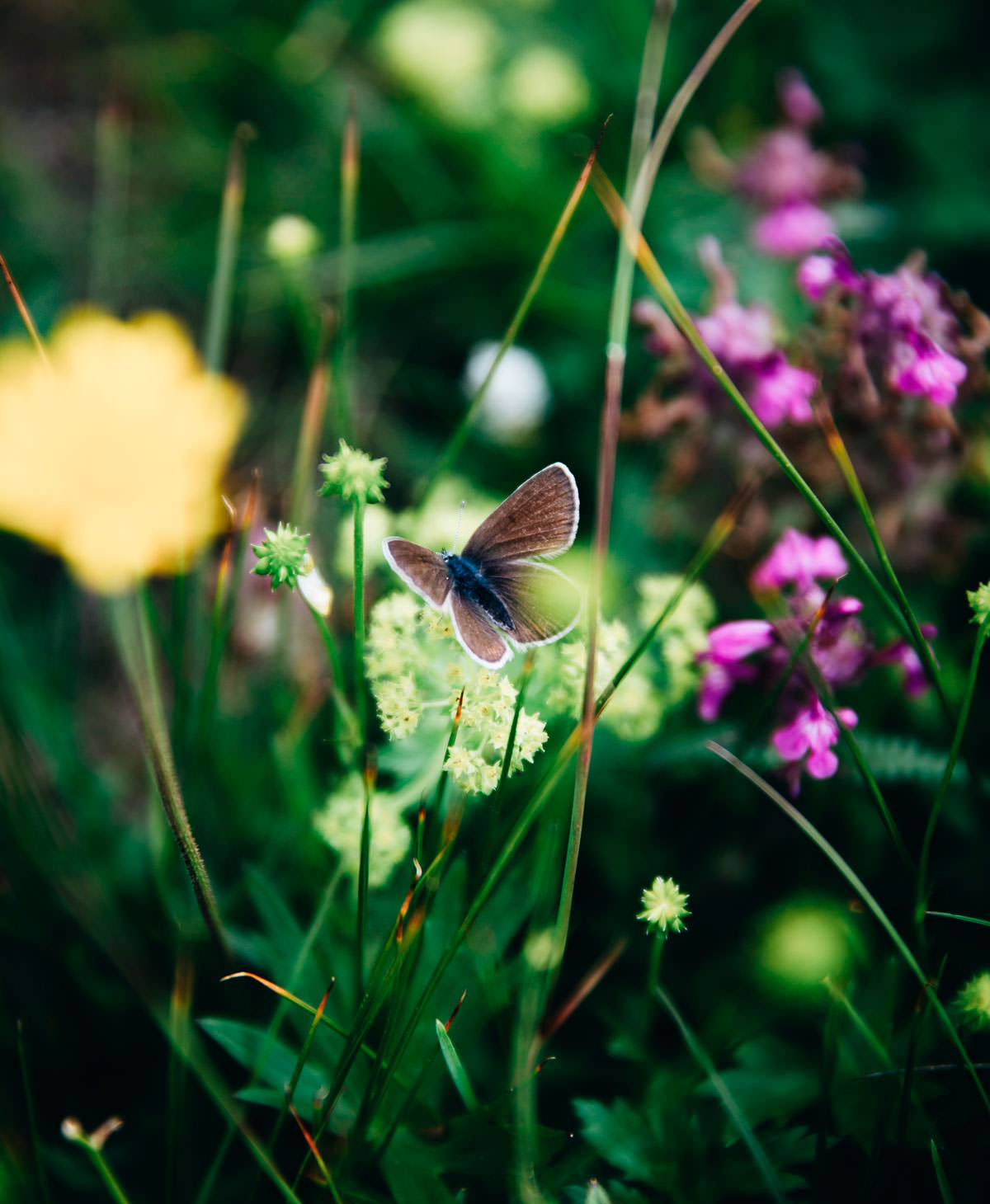
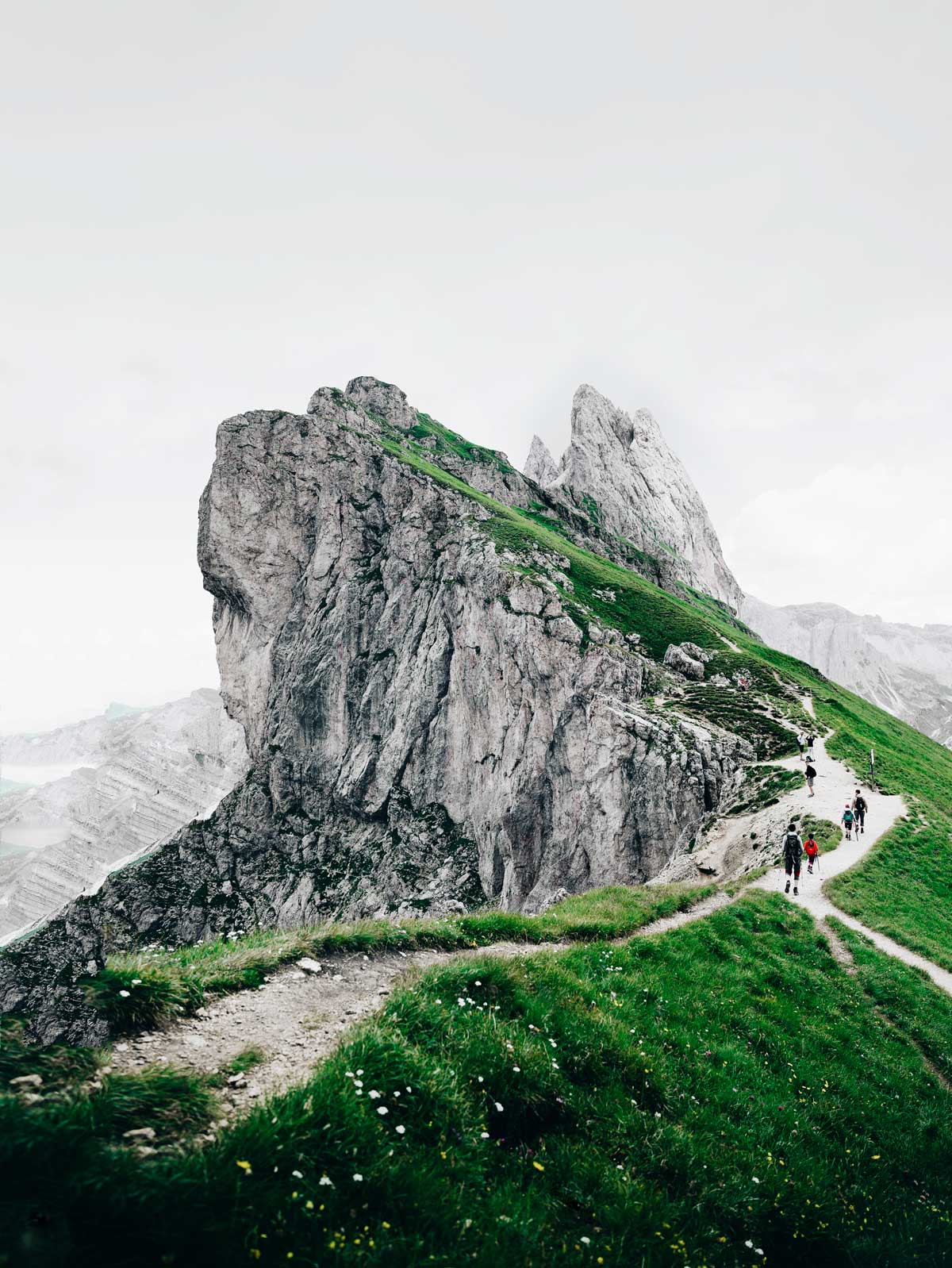

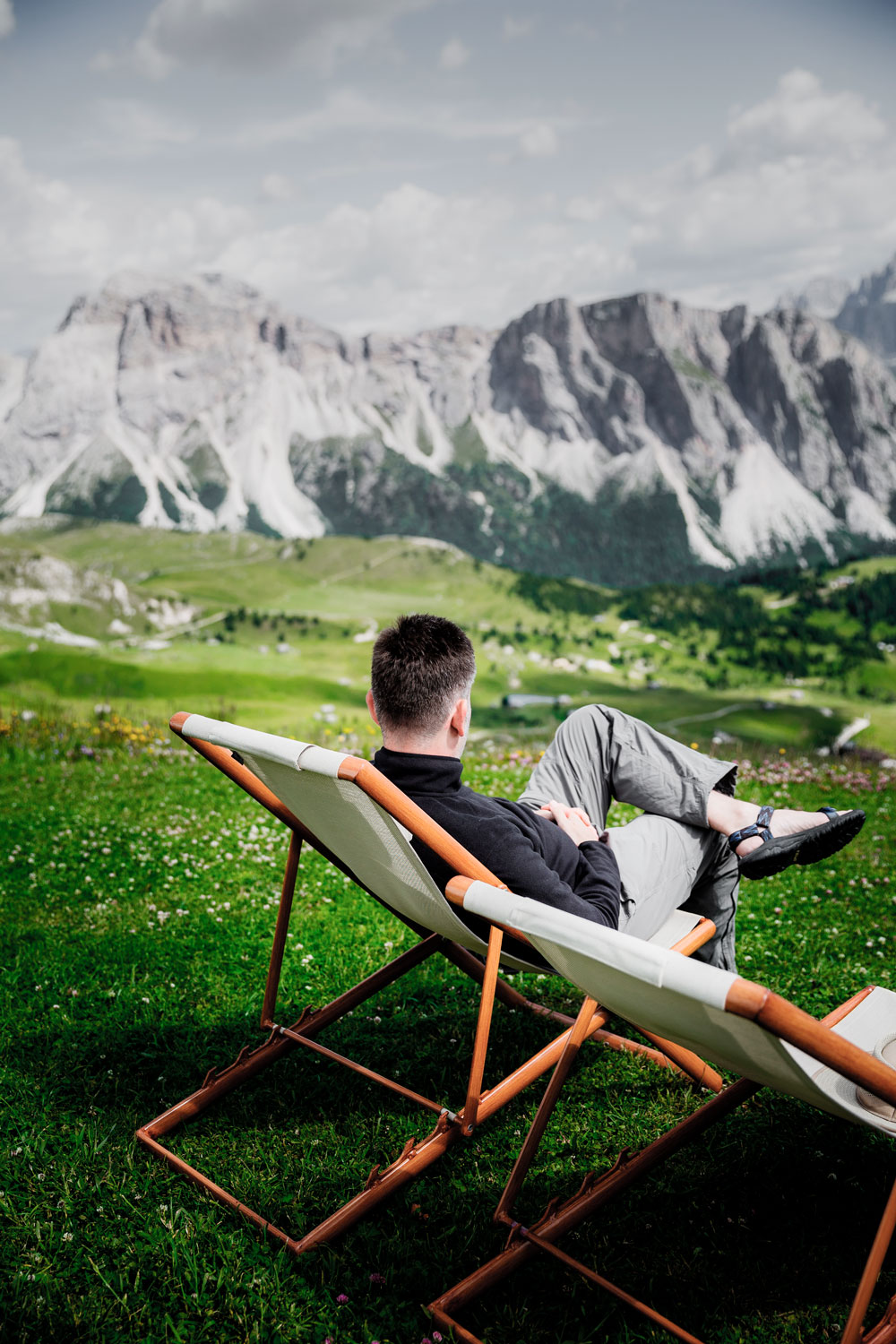

Day 5. Alpe Di Siusi / Seiser Alm
Drive: approx. 45 minutes from Ortisei to Compaccio, 20 km.
From Ortisei, our trip continues to Alpe Di Siusi – Europe’s largest mountain plateau. In fact, the plateau is closed for cars between 9 AM and 5 PM unless you have a booking at one of the hotels on the plateau. We wanted to experience the sunrise and sunset, and had booked a night at Hotel Bellavista. If you only want to visit the plateau on a day trip, you must take the cable car from either Ortisei or Siusi.
Our hotel is located in the small town of Compaccio / Kompatch which is the only town on the plateau. From the town there are both hiking trails and several cable cars that will take you out into the green landscape.
You can read more about things to do in Alpe Di Siusi in my blog post here
Practical info: There is a ban on cars between 9.00 and 17.00, but the cable car runs during this period from the towns Ortisei and Siusi.

Day 6. Hiking in the Puez Geizler / Puez Odle Nature Park
Drive: 1 hour from Compaccio to Zannes / Zans Info Point, 44 km.
On day 6 we drive from Alpi Di Siusi to the nature park Puez Geizler, or Puez Odle as it is called in German. On the way we pass another great photo spot: the little church St. Johann in the small town of Santa Magdalena. You can find the church here on Google Maps. We leave the car in the parking lot at Zannes / Zans Info Point and start the trip to Genova Hütte where we will stay for the night. The park has no famous sights and we have found it somewhat by chance in a guidebook. For that reason, it’s much less crowded.
Where Refugio Locatelli was located in a bare mountain landscape, Refugio Genova is surrounded by flowering green hills where cute marmots peek up from the grass. The next day we start heading towards the mountain top Tullen. The plan is not really to reach the top, as it is a demanding trip, which takes much longer than the time we have available. We just want to experience the mountain and the nature. First the path goes down through a thriving green valley and past the cottage Kaserill Alm. Then we take the path Obere Herrenstieg up the mountain. The trail is narrow, steep and full of rocks and roots, and our pulses quickly rise. But it’s enjoyable to move up the hill like this step by step.
We eat our the lunch we brought with us up above the tree line overlooking the steep peaks on the other side. An eagle floats above us and the air is filled with butterflies. We are chased by a little blue butterfly who, it seems, would much rather rest on us than on the many flowers that surround us. We meet a couple of hikers who are on their way to Tullen, but otherwise we are alone.
Somewhat wistfully, we begin our descent down the mountain and back to the parking lot at Zannes Point. This is our last hike in the Dolomites.
Practical info: The trip starts at Zannes / Zans info point. You can book accommodation in Refugio Genova / Schlüter Hütte right here. The cabin is open from mid-June to mid-October and an overnight stay in the dormitory costs 21 EUR. We found this route in a guidebook called Walking in the Dolomites by Gillian Price and we supplemented it with this map that made it easy to alter the route according to our own needs.
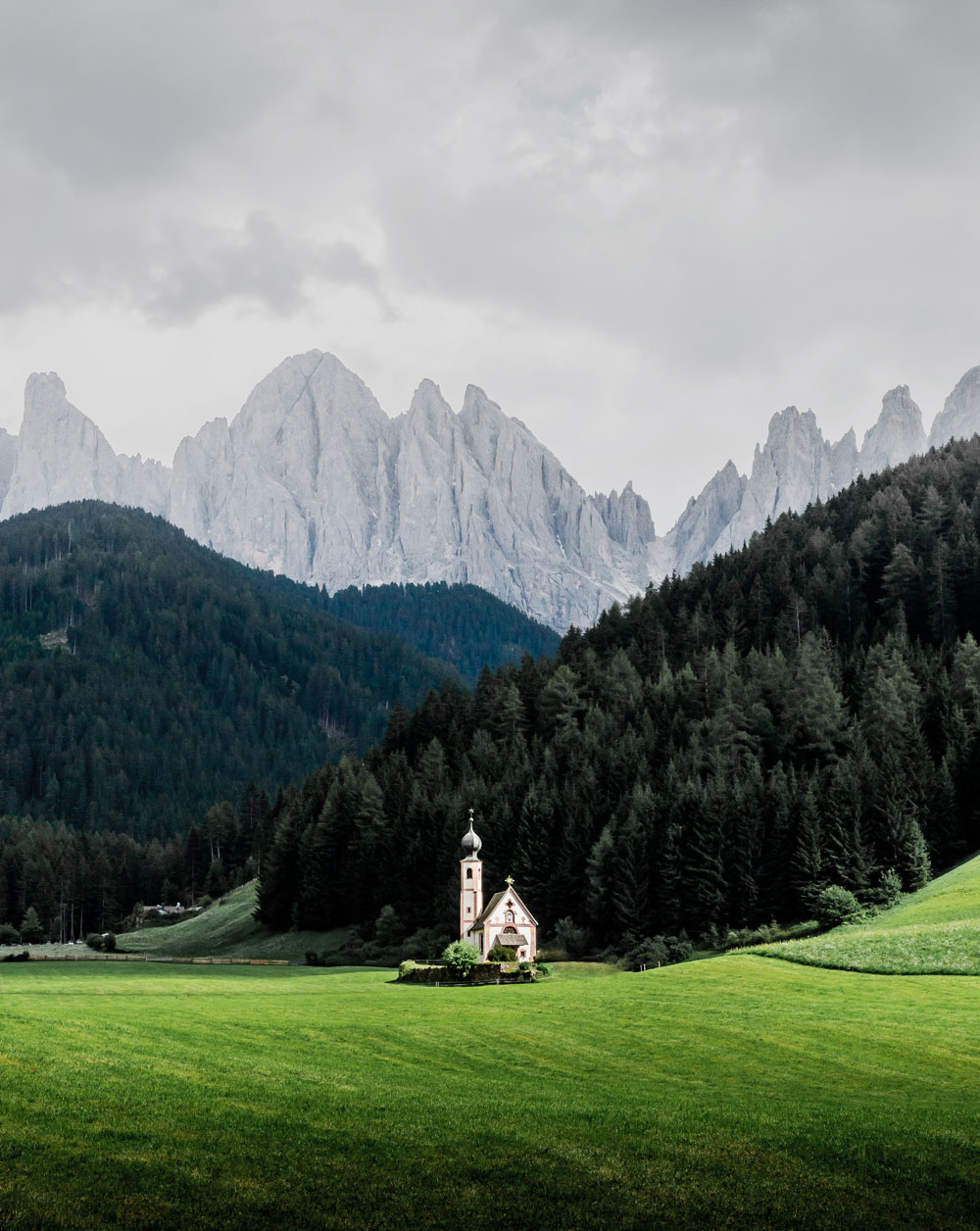

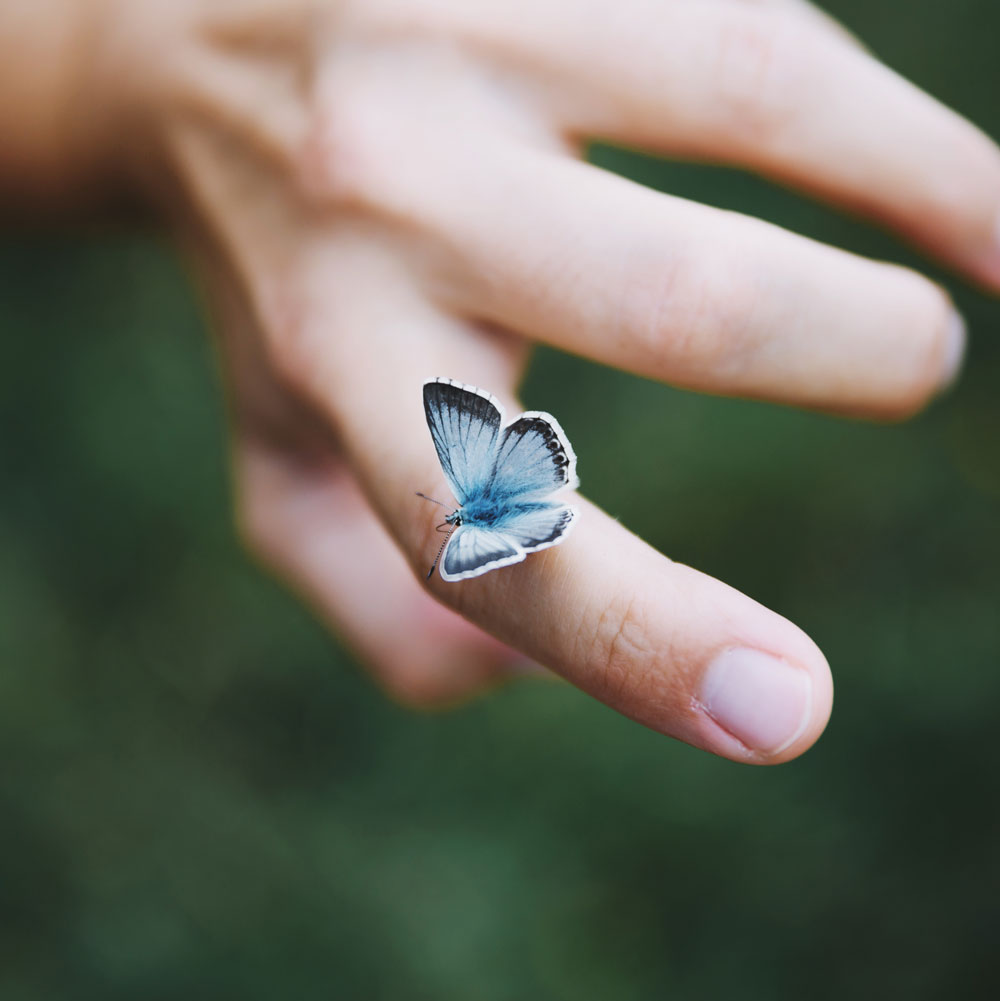 There are so many butterflies in the Dolomites. This blue one would much rather sit on us than on the many flowers around us.
There are so many butterflies in the Dolomites. This blue one would much rather sit on us than on the many flowers around us.

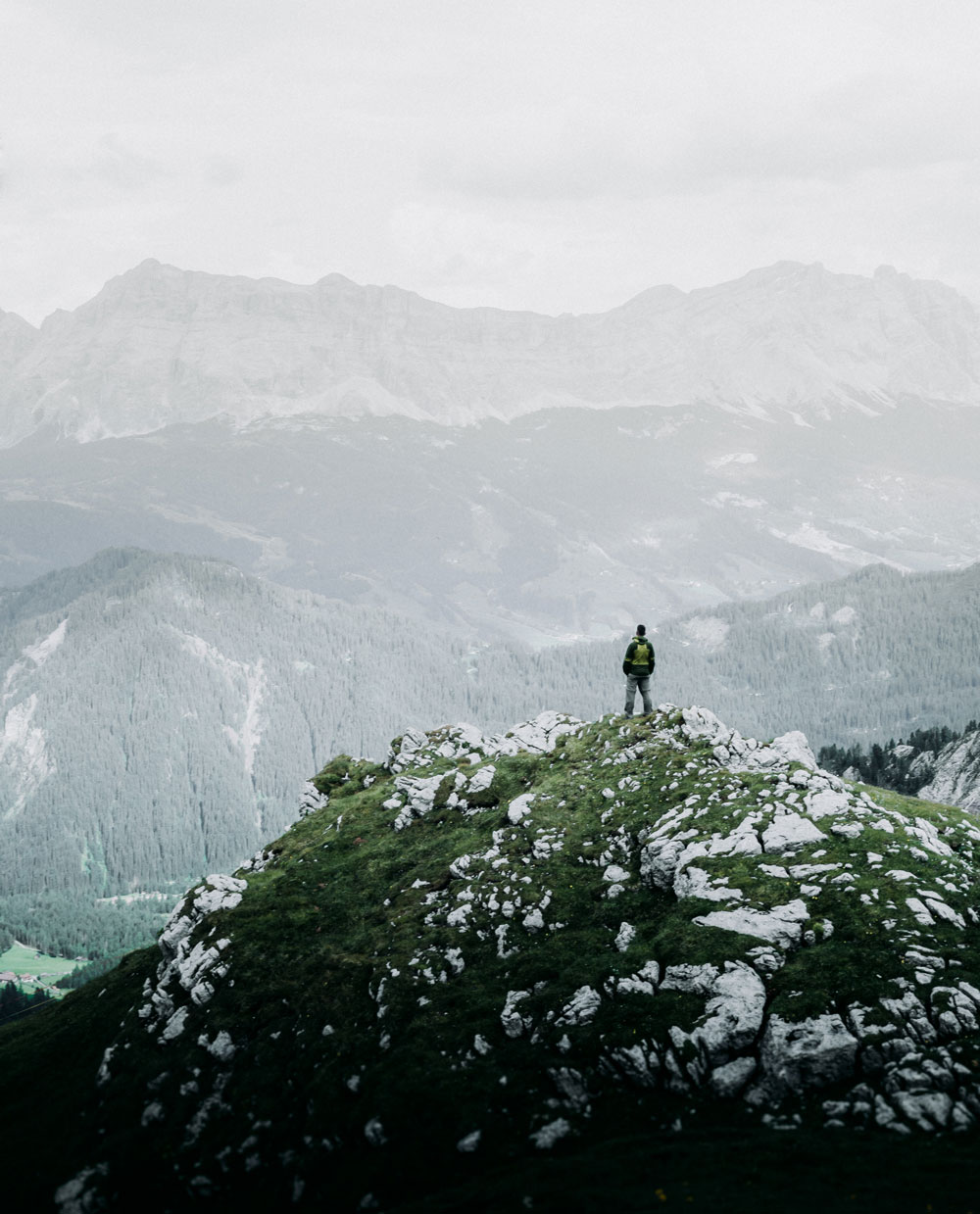

The best time to visit the Dolomites
The best time to visit the Dolomites is in the summer, from June to September. Our trip was in late July. In high summer temperatures are really comfortable in the mountains and sit around 20 degrees – the perfect temperature, in my opinion, for hiking and active holidays. The downside of the high summer is, of course, the larger numbers of people. Italians take their holidays in August so avoid this month if you want to avoid the most extreme crowds. Many say September is the best month to visit, as there are fewer people and still good summer days. But, as always in the mountains, the weather can be very unpredictable and the farther away you get from high summer the greater are the chances of snow or night frost. If you go early in the season be aware that Refugio Locatelli doesn’t open before late June and that the cable car to Seceda only starts operating in mid June.
Accommodation in the Dolomites
Hotels
Northern Italy is a rich area, in general, so there are many luxurious and expensive hotels. We had a little trouble finding budget-friendly hotels and had to spend between 80 and 120 EUR per night. We used booking.com to find accommodation. At Lago Di Braies, all the nearby hotels were already fully booked on booking.com three months before our trip, but I found a hotel only 2 kilometres from the lake. I searched for hotels on Google Maps and simply sent emails until I got a positive response.
Hiking cabins
You will have the most ultimate Dolomites experience if you hike in the mountains and stay in the various huts. There are so many that it’s really hard to get an overview of them, but my advice is first to choose the area or route you want to visit and then research cabins in that area, as they are almost everywhere. Most have pillows and blankets and good restaurant food, so you don’t have to carry so many things in your backpack.
Is it allowed to set up your own tent up in the Dolomites?
As a rule, free camping in the Dolomites is not allowed, but if you have a tent you can stay at one of the official campsites.
Transport in the Dolomites
It is possible to experience the Dolomites by bus and train, but you can save a lot of time by renting a car. It is relatively cheap in Italy (we paid just over 300 EUR for 9 days.) On the other hand, there are many toll roads and you will also have to pay to park at the sights.
What you should bring
Hiking in the mountains requires good hiking boots. The weather can be very changeable, so remember to bring warm clothes and at least a wind- and waterproof jacket, even in summer. You do not need to bring food, tents, sleeping bags or pillows as the hiking huts will supply those things. It may be smart to bring a travel sheet for hygiene reasons.
Guidebooks to the Dolomites
We used Gillian Prices’ two guidebooks to plan our hiking trips and I can really recommend them!
One focuses on multi day trips and are called Walking in the Dolomites: 25 Multi-day Routes in Italy’s Dolomites. You can buy it on Amazon right here
The other on short trips: Shorter walks in the Dolomites. 50 varied day walks in the mountains. Find it on Amazon right here.
Travel video from the Dolomites
Here you can see a small travel video from some of the beautiful places we visited.
Like this post? Save it on Pinterest




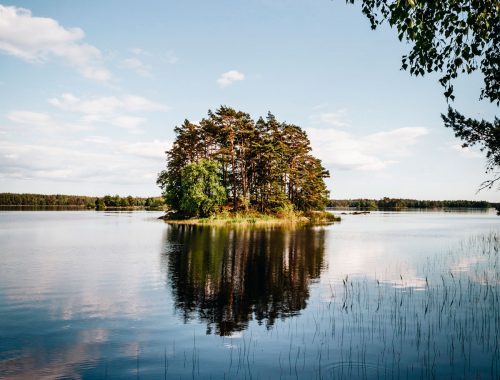

26 Comments
Wow what an amzing post and what an unforgettable trip it must have been. Saved it for later as we will be in the dolomites next month!
Thanks for sharing.
Christian
http://www.barefoottravelling.de/
[…] The Dolomites: A 6 day itinerary to the best photo locations […]
Hi Sarah, thanks for writing such an amazing blog. Photos were fantastic however I feel the differentiating factor was the details itinerary and useful information together with the photos that really made a huge impact.
Hi Sarah! Great info! Did you guys travel carry on only and hike with all of your belongings when you stayed in the refugios?
Hi Patty! We didn’t hike with all of our belongings – we packed a light packpack and left the rest in the car. Somebody else mentioned they were afraid of theft but if you put the stuff in the trunk most insurences will cover it. We brought our camera gear with us so the things we left behind were just extra shoes and clothes . Nothing worth stealing anyway.
[…] out Sarah the Green’s 6 day itinerary of the Dolomites, where she also shows you the best photo […]
Hi Sarah, the pictures are stunning! We are planning our trip now and I also can’t find any reasonably priced hotels near Lago Di Braies. Could you please share contacts for the place where you stayed? Thanks!
Hi Andrianna! We stayed at Gasthof Huber around 2 km from Lago Di Braies: https://www.booking.com/hotel/it/gasthof-huber.en.html?aid=819697&no_rooms=1&group_adults=2
Hi Sarah,
I think I am a little late at finding your blog and Instagram – but OMG!!! Everything looks so incredible. I am trying to plan a trip to the Dolomites in June – are you able to share what sort of budget you had? I am trying to keep costs low. If you are able to reply to this I would be extremely grateful!
Thanks so much,
Thalia xx
@thalia.tourikis
Hi Thalia! The Dolomites are not the most budget friendly place but we managed to find accommodations around 110 eur per night for two people. The rental car was around 350 eur for six days. All in all I think the trip costs us around 1500 eur per person including food, cable car tickets, parking and all.
hi ,loved your itinerary, me and my wife were planning a trip in mid may,we have 7 days to explore dolomites.what would you suggest we do? thanks
I have the same question as someone above about only having four days there. What itinerary should be a “must” for that time period and what could we skip from your itinerary. Can you stay in one place for the three nights or is it necessary to move to see it all? Thank you for posting this.
Hi Randi! It’s definitely possible so stay in one place. If I had only four days I would stay in Bolzano and see the things closest by – Lago Carezza, Seceda, Alpe Di Suisi and Puez Odle. Or I would stay in Cortina d’Ampezzo and see Tre Cime and Lago Di Braies. If you stayed in Bolzano and wanted to see Tre Cime you would have to drive 4 hours in total back an forth and that would be too much in my opinion.
Thank you for sharing such fantastic info! Can you please tell me what month you visited when these pictures were taken? We are debating between visiting late May-early June or September!
Hi Samantha! We went in late July and the weather was just perfect. A bit crowded but we could manage that by going on hikes in the evening. If you book your trip very early in the season be aware that some of the mountains huts don’t open until late June – that goes for Refugio Locatelli. And the cable car to Seceda usually starts running in the beginning of June.
Sarah. This is great content. We will be traveling from Venice to the Dolomites in mid May before the lift open. We want to make the most of our 3 1/2 days/3 nights before we have to be back in Venice. What MUSTs would you recommend seeing and how best to overnight and route the trip. Thanks for your help.
Your post is amazing ! I love your itinerary, I really would love to do the same but I only have 4 days, if I had to skip some hikes to make it work, what should my itinerary look like ? Thank you so much for your help !
Thank you Yasmine! This could be doable in 4 days: Day 1: Driving from the airport and seeing Lago Carezza in the evening. Day 2: Hiking only half of the trip round Tre Cime and then seeing Lago Braies in the evening skipping the hike around the lake. Day 3: Taking the cable car to Seceda in the morning and then driving to Alpe Di Suisi to see the sunset (skipping the hike there too) Day 4: Driving by the little church St. Johann and then back to the airport.
Excellent post! I love how you structured the story with the practical info, and of course the photos are out of this world. 🙂 I’ll save your article for when i plan a trip to the Dolomites.
Cheers!
Anita
Hi Sarah, thank you so much for sharing your itinerary. Can you give me the name of rental car company ?
Thank you for sharing… route looks great. photos are beautiful :))
Hi Sarah, awesome posts lots of great information. I have been thinking of getting a map for the area. Would you recommend one map company over another? I know they speak Italian and German in the area. Being from the states I unfortunately only speak English. Will they speak enough English we can get by? Hopefully they will not be offended because we don’t speak their native language? Also we are going to be there for a while. We have 15 days should we spend them all there. Can you recommend the best quaint mountain towns to visit to break up the days of hiking so we can take a day off and rest? Thanks so much, Jerry
Hi Jerry! We used this map for our Puez Geizler hike:
https://www.amazon.com/bressanone-brixen-val-funes-n-30/dp/8883150309/ref=sr_1_fkmr0_1?s=books&ie=UTF8&qid=1539628543&sr=1-1-fkmr0&keywords=tabacco+brixen+villnossertal
It doesn’t cover the entire Dolomites so you need to get several maps if you are travelling all over the Dolomites. The publisher is called Tabacco. People there are really friendly there so I am sure you will do fine with english. We didn’t really stay in that many towns but we drove trough Cortina D’Ampezzo and it looked really nice.
This is an amazing itinerary, thank you so much for sharing! I’m using this to help plan my trip this spring. We are planning visit the first week of June. I am looking into the cable car up to Seceda and I can’t tell if it will be open when we visit. I see the only one open in early June is the “Col Raiser”… is this the gondola you took up to that amazing view point or was it another?
Thank you so much Kelly! We took the cable car from Ortisei-Furnes-Seceda but it looks like it will not open until the 15th of June. You could hike up there from Col Raiser. Then you’ll have a not so steep climb through the beautiful green valley. I havent’t done the hike myself but it looked wonderful from above. I have found a description of it here: https://www.valgardena-groeden.com/en/leisure-activities/mountains-and-hiking/from-the-col-raiser-to-the-top-of-mt-seceda/
This looks amazing! Thank you for sharing! I have saved it for later. I have seen more and more about the Dolomites and they are starting to go higher up on my list of must see!